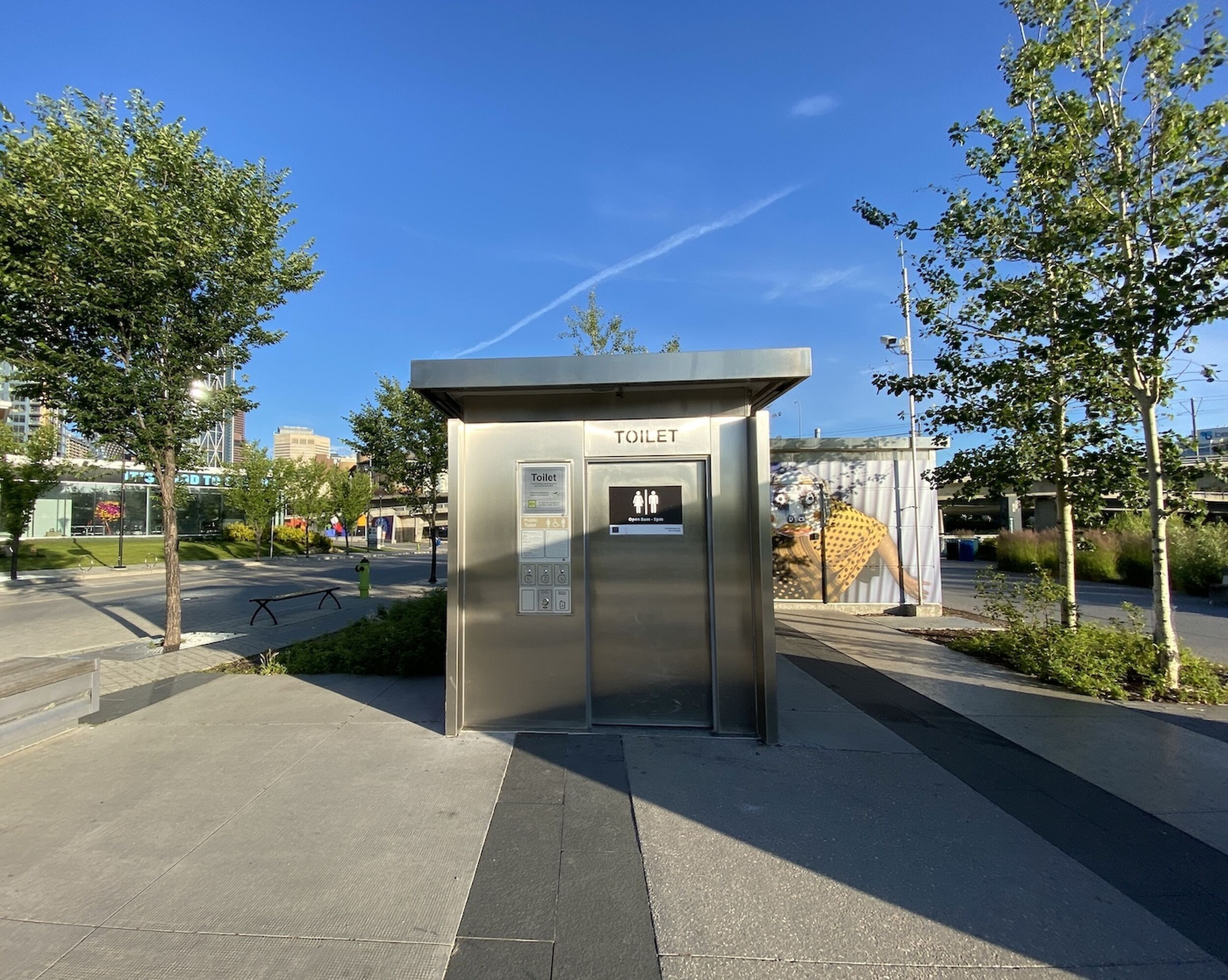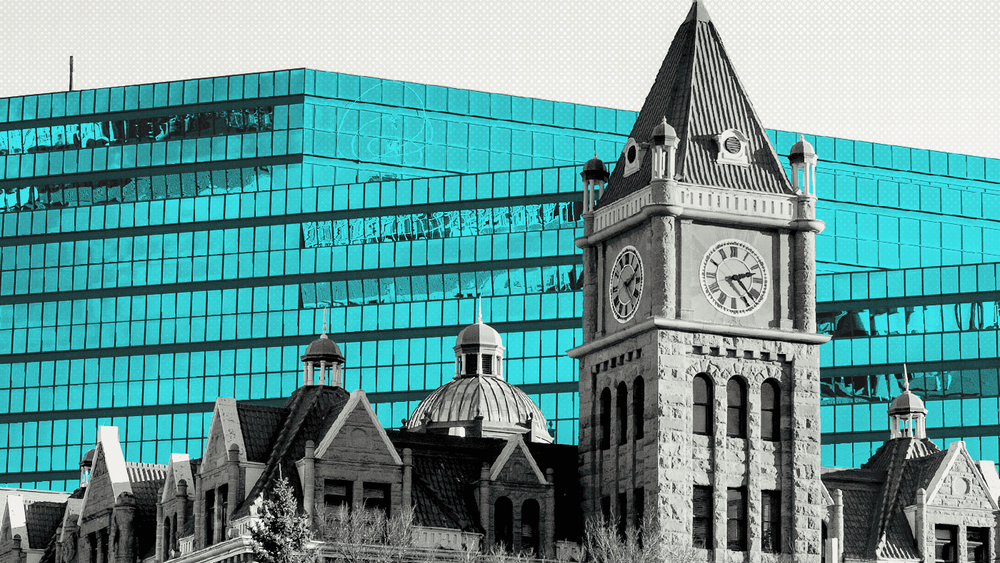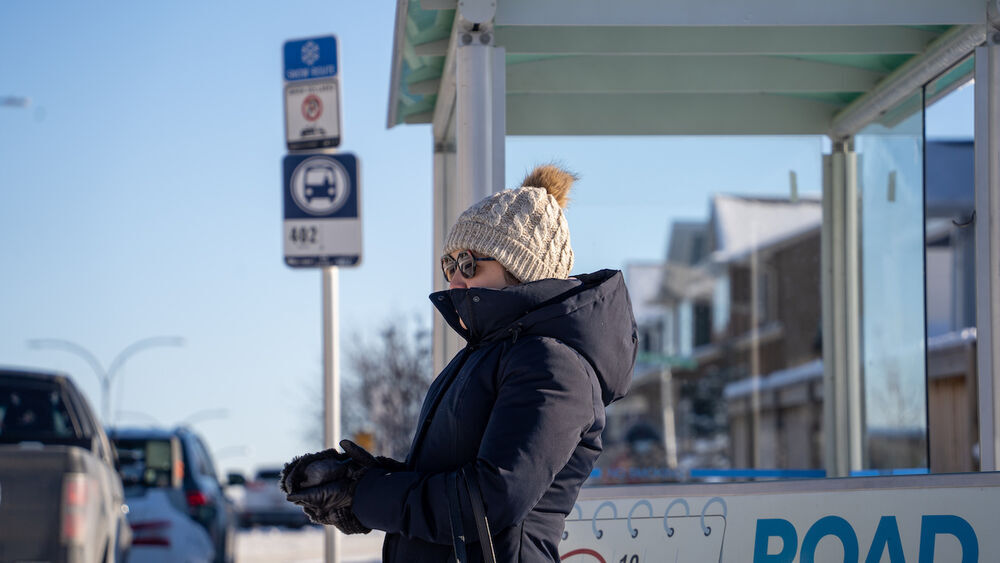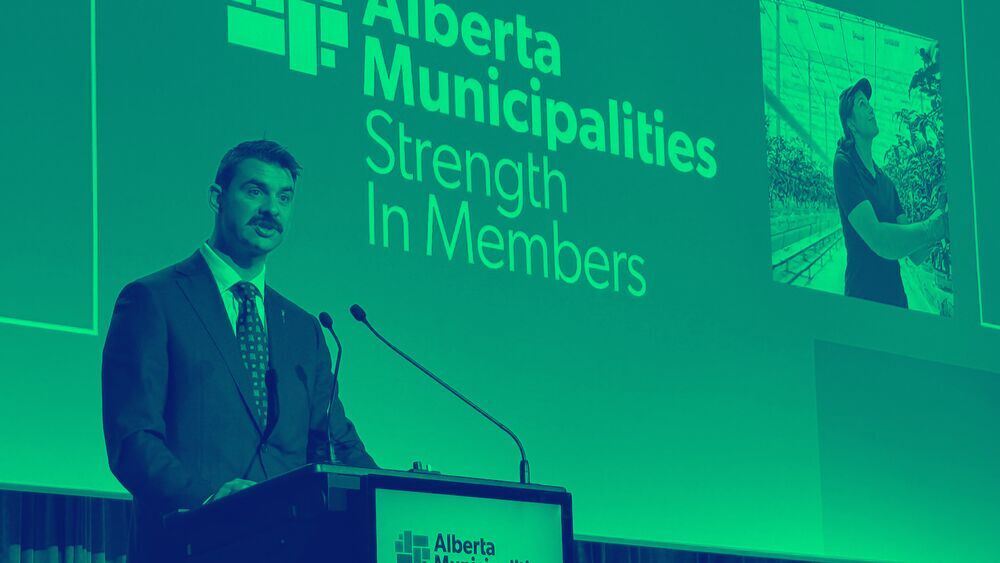
State-of-the-art public toilet at East Village. Photo: Jeremy Klaszus
In Calgary, access to clean and safe toilets is a privilege
Sanitation issues are a human rights concern.
Support independent Calgary journalism!
Sign Me Up!The Sprawl connects Calgarians with their city through in-depth, curiosity-driven journalism. But we can't do it alone. If you value our work, support The Sprawl so we can keep digging into municipal issues in Calgary!
Public toilets are key sanitation infrastructure, and Calgary is in the middle of a sanitation crisis.
Although it might seem like there’s always a washroom around when you need it, toilets in cafés, restaurants or stores are owned by private businesses. And owners reserve the right to refuse access to whomever they want, with many of these washrooms being protected by pin-codes or keys.
If you’ve never had to think of washroom access as an issue, you enjoy a quiet dignity that isn’t afforded to many other people. Most often, they are among the city’s most vulnerable—the unhoused population.
When The Economist named Calgary the “most livable city in North America” in 2018 and again in 2019, we celebrated our innovative city. But how “livable” can it be if thousands of residents are forced to navigate a city without housing or a toilet when they need one?
In May, Leonard Hofer moved into a quiet room overlooking a ski hill. Before that, he spent nine years without permanent housing, staying at the Drop-In Centre and around the Marlborough community.
Wherever he was, when Hofer needed a restroom, his chances of accessing one were slim. Even if he did find a facility, it was often filthy.
We’ve done a poor job of supplying public washrooms to Calgarians.
Around five years ago, Hofer was arrested for failing to pay a $300 public urination ticket. He couldn’t find a bathroom and businesses refused him entry because he “looked homeless.”
“They [the Calgary Police] picked me up on that warrant and drove me to the Remand,” he recounted. “They put me in a cell and I had to stay there for the night.”
"It was really difficult to find a public washroom. So I had to relieve myself somehow. So I did it outside behind a garbage dump,” Hofer said. "It makes me feel degraded.”
Hofer isn’t the first to suffer at the hand of the system. And without change, he won’t be the last.
A slow response from city council
Public bathrooms have been a hot topic at city council for years. The city started exploring accessible public toilet infrastructure in 2008. But since then, Calgary has made little headway beyond installing a handful of self-cleaning restrooms in busy areas like East Village and 17th Avenue.
"We've done a poor job of supplying public washrooms to Calgarians." Coun. Druh Farrell said. "It's a broad group who could use them. It ranges from seniors to people who are unhoused.”
When the pandemic hit and businesses closed or restricted access to their facilities, the city put in porta-potties in and around downtown. Still, for Alberta’s largest city, the infrastructure is far from adequate.
It makes me feel disrespected and like a low-life… They pretend to care, but they don’t.
Almost 3,000 Calgarians experienced homelessness in 2018. Over 60% were considered chronically homeless (without housing for six months out of the year or 18 months recurrently over three years).
“One of my friends—he has to take a pee in a cup, like a big triple-triple cup from Tim Hortons. And sometimes he falls asleep and pisses himself. But if he had his own place, he wouldn't have to do that,” Hofer said.
In 2008 the City introduced its “10 Year Plan to End Homelessness.” Over a decade later, the goal of ending homelessness is still out of reach.
And those who are directly affected are taking notice.
"It makes me feel disrespected and like a low-life,” Hofer said. "They pretend to care, but they don't."
The lack of public toilets is a social problem
The fact that all Calgarians can’t “go” when they need to is social inequity at its core. A lack of access magnifies it.
The privilege of a clean, safe place to use the restroom has been normalized by—well, those who hold that privilege. And more often than not, those are the voices that are heard. If they’re not talking about the issue (or acknowledging it), it perpetuates the cycle.
Everybody anywhere should have access to a clean toilet, sustainably treated, and anytime they need.
"The first human right is not to have homeless people,” Jack Sim, founder of the World Toilet Organization (WTO) said. "This is not a toilet problem, but a social problem."
Sim started his toilet activism in his home of Singapore. He founded the WTO in 2001.
He even drew the attention Lily Zepeda, a filmmaker from California who directed Mr. Toilet: The World’s #2 Man, a documentary that follows Sim as he challenges toilet inequality.
Sim’s organization has worked with policy-makers and politicians around the globe to improve toilet and sanitation conditions.
Since its founding, the WTO has built facilities in rural China and India while supporting activists worldwide.
"My mission is that everybody anywhere should have access to a clean toilet, sustainably treated, and anytime they need. So it's not just a toilet at home, but a toilet anywhere you are—at work, in the office, in the streets, in the shopping area, restaurants—everywhere,” Sim said.
That includes Calgary.
Our public facilities are concentrated around municipal parks and high traffic areas. Like the porta-potties, they’re not always clean, safe or open.
"If there is no access to [a] toilet, that's a crisis,” said Sim.

Developed nations have a natural inclination towards superiority. It poses a danger of masking local problems and subduing marginalized voices. Addressing it is the first step. Limited restroom framework is a glimpse into mismanaged concerns.
“The root cause is the extractive society—concentration of wealth in the hands of a few people," said Sim. “First this story is about a toilet problem, then it becomes a social problem, and then you realize that the toilet is the symptom.”
That doesn’t mean toilets aren’t important—they are. Understanding why we have this problem in the first place is key.
“You cannot say a place is successful when a large portion of the population is suffering, that is not success,” said Farrell. “We failed marginalized populations by not providing basic needs like housing.”
"I hope that we measure success differently, moving forward. It can't just be a gross domestic product,” she added.
Where toilets stand now
“The city continues to work with local businesses and community groups to prioritize additional locations for public washrooms and has a process in place for expediting the installation of safe, clean portable units for use by all Calgarians,” the City of Calgary told The Sprawl in an email.
But beyond publicly-funded restrooms in parks and porta-potties, there have been few advancements. In 2008 the city installed an automated toilet in Tomkins Park. The “state-of-the-art” facility was the first push for public toilets.
When reports of “misuse” started to roll in, the CMLC rolled back the operational hours.
But it’s faced its fair share of criticism since. People’s complaints about sanitation, safety and maintenance sparked a debate at city council about whether or not to keep it open.
The Calgary Municipal Land Corporation (CMLC)—a subsidiary of the City of Calgary—has also looked into the issue.
The CMLC owns and maintains the public restrooms in East Village and on St. Patrick’s Island. Like the Tomkins Park experiment, those facilities have also faced criticism. When reports of “misuse” started to roll in, the CMLC rolled back the operational hours.
"People who are experiencing homelessness, the right to dignity and being able to use clean, safe facilities is as much as it was as important for those people as pathway users that might be commuting to and from work on their bicycle,” said Jessa Morrison, CMLC’s senior manager of marketing and communications.
The East Village facilities are closed to the public from November to May. St. Patrick’s Island Park remains open year-round but with reduced hours in the winter months.
What you don’t discuss, you can’t improve.
"It's always striking a balance of just like, safety for all, including the people experiencing homelessness that live in our community. We have an obligation to keep all people safe,” said Morrison.
The future of a 'love-based society'
Nonetheless, doing better for all Calgarians isn’t an idealistic fantasy.
Japan has one of the highest ratios of toilets to people in the world. Sim was so impressed that he began working with the government to promote Japanese toilet culture everywhere.
They’re free to use, they’re constantly maintained and the public culture sustains their cleanliness. They’re even available outside of major cities and in rural areas.
It comes down to prioritizing people over budgets—whether it’s housing or washrooms.
“[In] a love-based society, you are recognized when you help people, and everybody recognizes each other when they help people. And they do not recognize people who are selfish and hoard money,” Sim said.
Sim also says that concrete change starts with looking to the future and working backwards. What is the best version of Calgary that we can imagine and how can we get there?
If it’s a Calgary without homelessness, we need to tackle the many layers of the issue. Mental health resources, addiction support, housing, food accessibility, urban design, a guaranteed income—they all tie in.
"We haven't had the guts to go and say, ‘We need to readjust our priorities and focus on prevention [of homelessness], focus on wellness and wellbeing,’" said Farrell.
Obviously, the city can’t do it alone. But the vision starts here.
But these conversations need to be on the table before the vision can come into focus.
"What you don't discuss, you can't improve," Sim said. "We have to discuss."
Hadeel Abdel-Nabi is The Sprawl’s staff writer intern.
Support independent Calgary journalism!
Sign Me Up!The Sprawl connects Calgarians with their city through in-depth, curiosity-driven journalism. But we can't do it alone. If you value our work, support The Sprawl so we can keep digging into municipal issues in Calgary!



